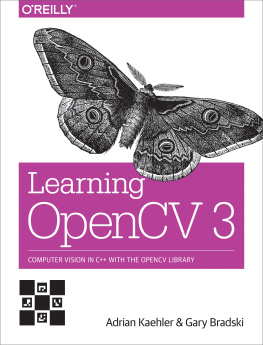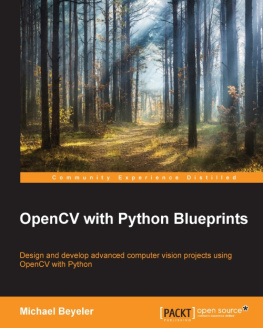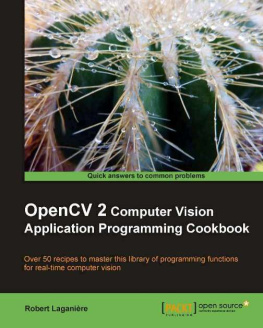Adrian Kaehler - Learning OpenCV 3: Computer Vision in C++ with the OpenCV Library
Here you can read online Adrian Kaehler - Learning OpenCV 3: Computer Vision in C++ with the OpenCV Library full text of the book (entire story) in english for free. Download pdf and epub, get meaning, cover and reviews about this ebook. year: 2016, publisher: OReilly Media, genre: Computer. Description of the work, (preface) as well as reviews are available. Best literature library LitArk.com created for fans of good reading and offers a wide selection of genres:
Romance novel
Science fiction
Adventure
Detective
Science
History
Home and family
Prose
Art
Politics
Computer
Non-fiction
Religion
Business
Children
Humor
Choose a favorite category and find really read worthwhile books. Enjoy immersion in the world of imagination, feel the emotions of the characters or learn something new for yourself, make an fascinating discovery.
- Book:Learning OpenCV 3: Computer Vision in C++ with the OpenCV Library
- Author:
- Publisher:OReilly Media
- Genre:
- Year:2016
- Rating:4 / 5
- Favourites:Add to favourites
- Your mark:
Learning OpenCV 3: Computer Vision in C++ with the OpenCV Library: summary, description and annotation
We offer to read an annotation, description, summary or preface (depends on what the author of the book "Learning OpenCV 3: Computer Vision in C++ with the OpenCV Library" wrote himself). If you haven't found the necessary information about the book — write in the comments, we will try to find it.
Learning OpenCV 3.0 puts you in the middle of the expanding field of computer vision. Written by the creators of the free open source OpenCV library, this book introduces you to computer vision and demonstrates how you can quickly build applications that enable computers to see and make decisions based on that data. Its thoroughly updated to cover new features and changes in OpenCV 3.0.
Computer vision is everywherein security systems, manufacturing inspection systems, medical image analysis, Unmanned Aerial Vehicles, and more. It stitches Google maps and Google Earth together, checks the pixels on LCD screens, and makes sure the stitches in your shirt are sewn properly. OpenCV provides an easy-to-use computer vision framework and a comprehensive library with more than 500 functions that can run vision code in real time.
Adrian Kaehler: author's other books
Who wrote Learning OpenCV 3: Computer Vision in C++ with the OpenCV Library? Find out the surname, the name of the author of the book and a list of all author's works by series.








